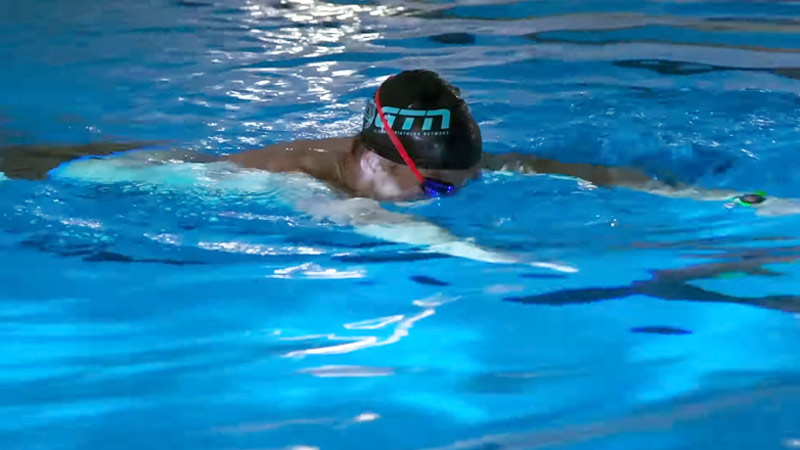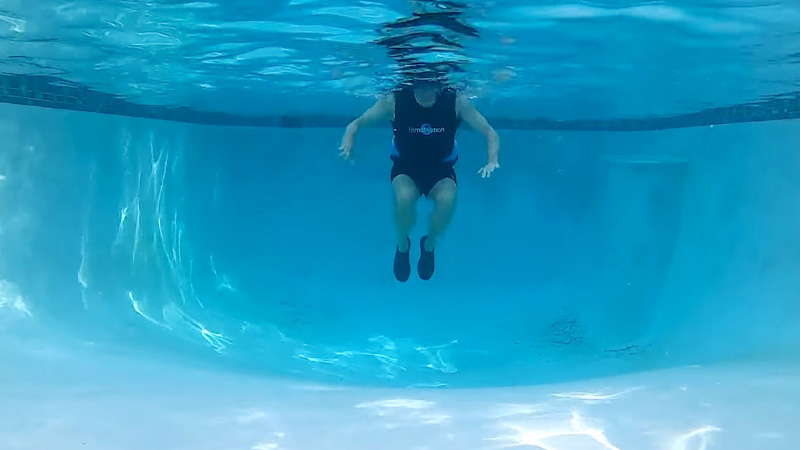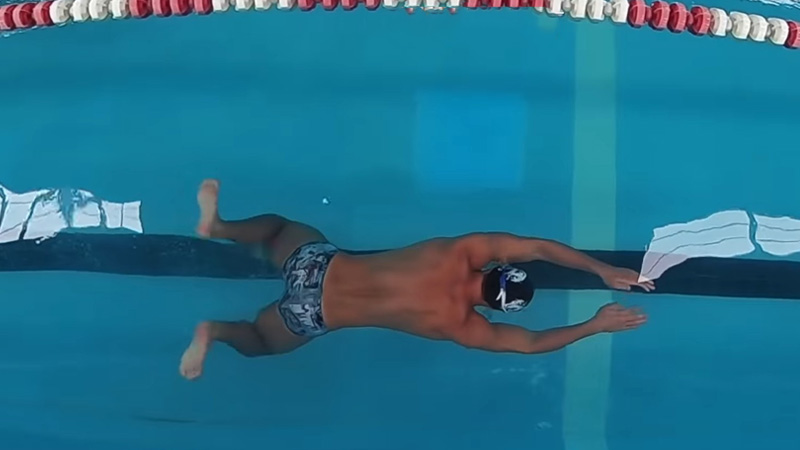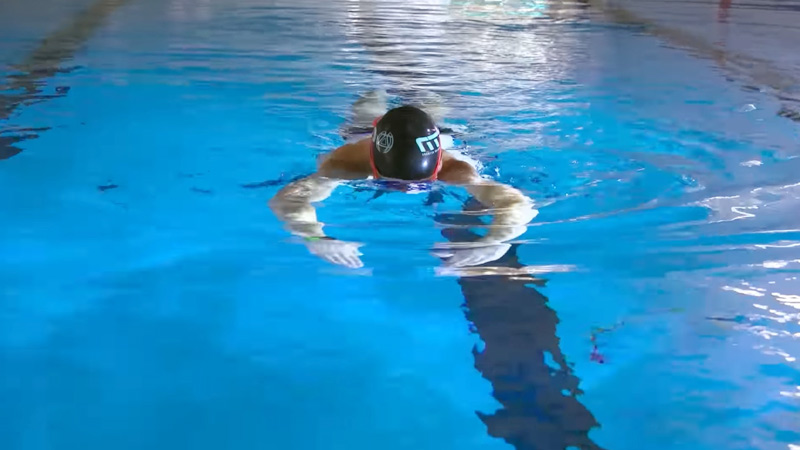Diving into the world of aquatic exercise unveils a hidden gem for pelvic floor health: swimming.
Beyond its renowned cardiovascular benefits, swimming engages a symphony of muscle groups, including the elusive pelvic floor muscles.
Understanding the nuanced relationship between swimming and pelvic floor health unveils a world of possibilities for those seeking a holistic approach to fitness.
From strokes to breathing techniques, the mechanics of swimming offer subtle yet impactful engagement of these crucial muscles.
This exploration delves into the ways swimming, a low-impact and versatile exercise, influences the pelvic floor, offering a fresh perspective on its role in overall well-being. So, stay sharp.
Understanding the Pelvic Floor Muscles
Before you learn whether is swimming good for prolapse or not, how about learning everything about the pelvic floor muscles?
The pelvic floor muscles, a group of tissues spanning the pelvis, support organs like the bladder, uterus, and rectum.
They play a crucial role in urinary and bowel control, sexual function, and stability of the pelvis. Weakness or tightness can lead to issues like incontinence or pelvic pain.
Kegel exercises, involving contraction and release of these muscles, help strengthen them. Maintaining a balanced pelvic floor is vital for both men and women, as it contributes to overall core strength and stability.
Awareness and targeted exercises, often recommended by healthcare professionals, are key to maintaining a healthy pelvic floor and preventing associated complications.
Does Swimming Exercise Pelvic Floor Muscles?
Can swimming strengthen the pelvic floor? It’s a very common question people make. Swimming is a full-body workout renowned for its cardiovascular benefits, but its impact on the pelvic floor muscles is a subject of interest:
Engagement through Movement
While swimming doesn’t directly isolate the pelvic floor muscles, the rhythmic kicking involved in various strokes engages these muscles.
The continuous leg movements, especially the flutter kick in styles like freestyle or butterfly, require stability and control, indirectly involving the pelvic floor.
Balanced Pressure and Support

The water’s buoyancy alleviates the gravitational pull on the body, reducing stress on the pelvic floor.
This can be beneficial for individuals with pelvic floor issues, as it allows exercising without high impact, maintaining a balance between challenging the muscles and minimizing strain.
Core Activation and Posture
Efficient swimming demands a strong core. Engaging the core muscles while swimming indirectly contributes to the stability of the pelvic floor.
Improved posture, a byproduct of swimming, can positively impact pelvic floor health by reducing undue pressure and strain.
Breath Control and Relaxation
Controlled breathing techniques are integral to swimming. Coordinating breath with movement can promote relaxation, potentially benefiting the pelvic floor muscles.
Learning to control the breath helps in reducing tension, which can indirectly aid in the relaxation of the pelvic floor.
Considerations for Impact
While swimming offers low-impact exercise, some strokes or styles might exert different pressures on the pelvic floor.
For instance, the breaststroke kick involves a wide leg movement, which might put more pressure on the pelvic floor compared to other strokes. Considering variations and individual conditions is crucial.
However, for targeted pelvic floor exercises, supplementary workouts specifically focusing on these muscles might be more effective.
Types of Pool Exercises for Pelvic Floor
Whether swimming strengthens your pelvic floor depends on the type of pool exercise.
Pool exercises tailored for the pelvic floor offer a unique way to target and strengthen these muscles while benefiting from the supportive properties of water:
Water Aerobics and Kegels

Incorporating traditional Kegel exercises into a water aerobics routine intensifies the workout. Water provides resistance, enhancing the effectiveness of Kegels.
Movements like leg lifts, flutter kicks, or arm exercises can be combined with intentional pelvic floor contractions, optimizing muscle strengthening.
Hydrotherapy and Stretching
Hydrotherapy, including stretches and gentle movements in water, can aid in relaxing and strengthening the pelvic floor.
Water’s buoyancy allows for less strenuous stretching, making it ideal for those with pelvic pain or tension.
Movements like pelvic tilts, gentle squats, and leg lifts, when performed mindfully, can promote flexibility and strength in the pelvic region.
Aquatic Pilates or Yoga
Pool-based Pilates or yoga sessions emphasize controlled movements and mindfulness. These exercises enhance core strength, including the pelvic floor.
Poses and movements tailored to the aquatic environment—such as pelvic tilts, modified planks, or specific yoga poses—engage the pelvic floor while benefitting from the water’s supportive resistance.
Resistance Training with Water Props
Using water dumbbells, noodles, or resistance bands in the pool amplifies the workout’s intensity.
Performing leg or arm exercises with these props not only engages major muscle groups but also activates the core, including the pelvic floor.
Resistance training in the water adds an extra challenge without high-impact stress.
Breathwork and Relaxation Techniques
Practicing deep breathing and relaxation exercises in the water can aid in releasing tension in the pelvic floor.
Controlled breathwork synchronizing with movements such as inhaling during relaxation and exhaling during contractions—can assist in promoting both strength and relaxation of the pelvic floor muscles.
Pool exercises designed for the pelvic floor offer a combination of resistance, support, and low-impact movements, making them an excellent choice for strengthening these muscles.
The Mechanics of Swimming and Pelvic Floor
The mechanics of swimming involve complex movements that can influence the pelvic floor in various ways:
Engagement through Kicking

The primary leg movements in swimming, especially the flutter kick, engage the muscles in the lower abdomen and pelvis.
While the emphasis is often on the larger muscle groups like the quadriceps and glutes, the repetitive kicking action indirectly involves the pelvic floor.
Consistent practice can enhance the strength and endurance of these muscles.
Core Activation and Stability
Efficient swimming requires a stable core. The engagement of the abdominal muscles, which are closely connected to the pelvic floor, provides a foundation for powerful strokes.
This core activation indirectly benefits the pelvic floor by promoting stability and support, reducing the risk of strain or injury.
Breath Control and Pelvic Floor Impact
Coordinating breathing with swimming movements is crucial. The diaphragm’s connection to the pelvic floor means that breath control can influence these muscles.
Properly timed breathing patterns can aid in controlling pressure within the abdomen, indirectly affecting the pelvic floor’s support and relaxation.
Strokes and Pelvic Floor Stress
Different swimming strokes can impact the pelvic floor differently.
For instance, the breaststroke involves a wider leg movement that might put more direct pressure on the pelvic floor compared to the more streamlined flutter kick of freestyle.
Being aware of these variations can help individuals adapt their swimming style for optimal pelvic floor health.
How swimming mechanics engage the core, involve repetitive leg movements, and impact breathing control provides insights into the indirect effects on the pelvic floor.
Benefits of Swimming for Pelvic Floor Health
You will learn whether is swimming good for pelvic floor muscles, once you have a proper idea on the benefits of swimming pelvic floor dysfunction.
Swimming offers several benefits for pelvic floor health, leveraging the unique properties of water and the nature of the exercise:
Low-impact, High-Benefit Exercise
Swimming is a low-impact workout that reduces stress on the joints and muscles, including the pelvic floor.
This is particularly beneficial for individuals with pelvic floor issues, as it allows for exercise without the jarring impact that some land-based exercises can cause, thereby minimizing strain on these muscles.
Overall Core Strength and Stability
Swimming engages the entire body, promoting core strength. A strong core, including the muscles surrounding the pelvis, contributes to pelvic floor health.
As the core is strengthened through various swimming strokes, the pelvic floor muscles indirectly benefit from this enhanced stability and support.
Enhanced Circulation and Relaxation
The water’s hydrostatic pressure can improve blood circulation and reduce swelling in the pelvic region, potentially alleviating discomfort.
Moreover, swimming in itself can be a relaxing activity, and the rhythmic nature of strokes combined with controlled breathing can promote relaxation, easing tension in the pelvic floor.
Customizable and Varied Workouts
Swimming offers a range of strokes and techniques that can be tailored to individual needs.
While some strokes may exert more pressure on the pelvic floor than others, the adaptability of swimming allows for adjustments in intensity and style, enabling individuals to find a routine that suits their pelvic floor health requirements.
Weight Management and Bladder Control
Maintaining a healthy weight through regular exercise, such as swimming, can positively impact pelvic floor health.
Additionally, swimming can help improve bladder control and reduce the risk of urinary incontinence by strengthening the muscles involved in urinary control.
Swimming, with its low-impact nature, overall body engagement, and the supportive properties of water, offers a holistic workout that indirectly benefits the pelvic floor.
FAQs
Is swimming good for the pelvic floor?
Swimming is a fantastic exercise for the pelvic floor. The rhythmic motion of swimming engages various muscle groups, including those supporting the pelvic floor.
The resistance of water also adds a gentle yet effective workout, contributing to pelvic floor strength and endurance. However, it’s essential to maintain proper swimming techniques to maximize the benefits for these muscles.
Does swimming help pelvic floor muscles?
Yes, swimming is a low-impact, full-body workout that engages the core, including the pelvic floor muscles.
The continuous movement in water provides resistance without high-impact stress, making it an excellent way to strengthen and tone the pelvic floor muscles.
Consistent swimming can improve their endurance and functionality.
Does swimming strengthen the pelvic floor?
Swimming can indeed strengthen the pelvic floor muscles. The action of swimming, involving various strokes and kicks, engages the core, which includes the pelvic floor.
The resistance of the water against the body’s movements acts as a form of resistance training, aiding in the strengthening of these muscles over time.
What are the benefits of swimming for pelvic floor muscles?
Swimming offers a range of benefits for the pelvic floor. It helps improve muscle tone, endurance, and control.
The low-impact nature of swimming reduces the risk of injury while effectively engaging these muscles. It also aids in improving overall core strength, which contributes significantly to pelvic floor health.
How does swimming specifically impact pelvic floor health?
Swimming involves movements that engage the core and lower body. These movements work the muscles surrounding the pelvis and lower abdomen, including the pelvic floor.
The resistance provided by the water challenges these muscles, promoting strength, stability, and control. Regular swimming can notably enhance pelvic floor health and function.
Wrapping Up
Swimming emerges as a holistic exercise benefiting pelvic floor health through its low-impact, full-body engagement.
From core activation to controlled breathing, the mechanics of swimming offer subtle yet profound benefits for these crucial muscles.
This underwater workout not only promotes pelvic floor strength but also supports overall well-being.
Integrating swimming into a fitness routine, opens a door to a comprehensive approach to pelvic floor health, empowering individuals to dive into a new realm of fitness and wellness. Thank you so much.







